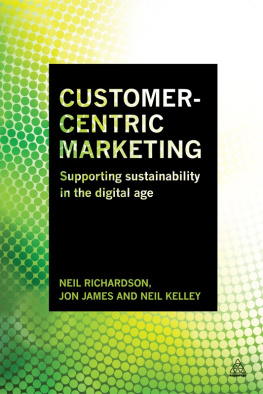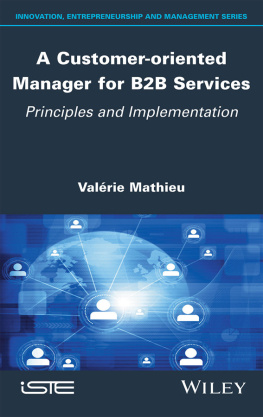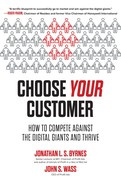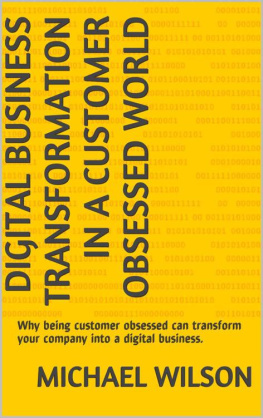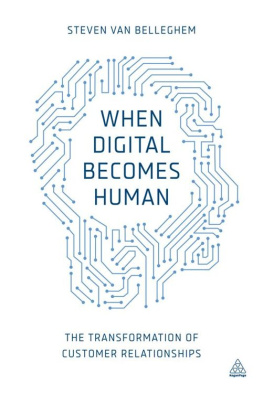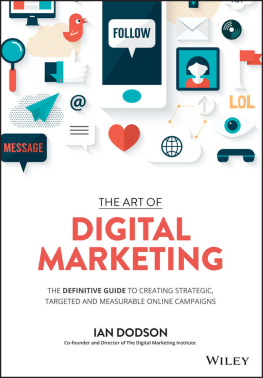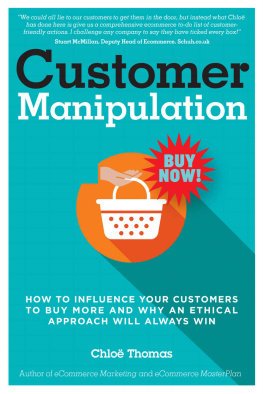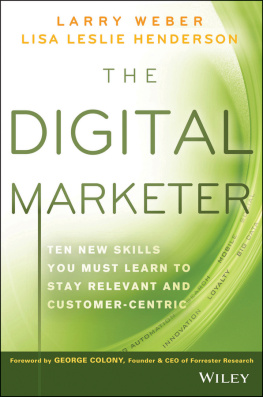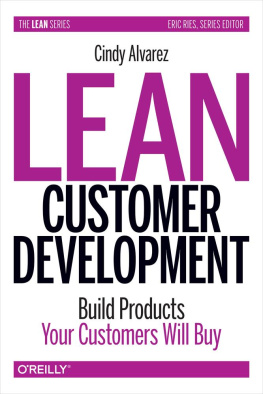Yves Caseau - The Lean Approach to Digital Transformation: From Customer to Code and From Code to Customer
Here you can read online Yves Caseau - The Lean Approach to Digital Transformation: From Customer to Code and From Code to Customer full text of the book (entire story) in english for free. Download pdf and epub, get meaning, cover and reviews about this ebook. City: New York, year: 2022, publisher: Routledge/Productivity Press, genre: Business. Description of the work, (preface) as well as reviews are available. Best literature library LitArk.com created for fans of good reading and offers a wide selection of genres:
Romance novel
Science fiction
Adventure
Detective
Science
History
Home and family
Prose
Art
Politics
Computer
Non-fiction
Religion
Business
Children
Humor
Choose a favorite category and find really read worthwhile books. Enjoy immersion in the world of imagination, feel the emotions of the characters or learn something new for yourself, make an fascinating discovery.
- Book:The Lean Approach to Digital Transformation: From Customer to Code and From Code to Customer
- Author:
- Publisher:Routledge/Productivity Press
- Genre:
- Year:2022
- City:New York
- Rating:4 / 5
- Favourites:Add to favourites
- Your mark:
The Lean Approach to Digital Transformation: From Customer to Code and From Code to Customer: summary, description and annotation
We offer to read an annotation, description, summary or preface (depends on what the author of the book "The Lean Approach to Digital Transformation: From Customer to Code and From Code to Customer" wrote himself). If you haven't found the necessary information about the book — write in the comments, we will try to find it.
The Lean Approach to Digital Transformation: From Customer to Code and From Code to Customer is organized into three parts that expose and develop the three capabilities that are essential for a successful digital transformation:
1. Understanding how to co-create digital services with users, whether they are customers or future customers. This ability combines observation, dialogue, and iterative experimentation. The approach proposed in this book is based on the Lean Startup approach, according to an extended vision that combines Design Thinking and Growth Hacking. Companies must become truly customer-centric, from observation and listening to co-development. The revolution of the digital age of the 21st century is that customer orientation is more imperative -- the era of abundance, usages rate of change, complexity of experiences, and shift of power towards communities -- are easier, using digital tools and digital communities.
2. Developing an information system (IS) that is the backbone of the digital transformation called exponential information system to designate an open IS (in particular on its borders), capable of interfacing and combining with external services, positioned as a player in software ecosystems and built for processing scalable and dynamic data flows. The exponential information system is constantly changing and it continuously absorbs the best of information processing technology, such as Artificial Intelligence and Machine Learning.
3. Building software micro-factories that produce service platforms, which are called Lean software factories. This software factory concept covers the integration of agile methods, tooling and continuous integration and deployment practices, a customer-oriented product approach, and a platform approach based on modularity, as well as API-based architecture and openness to external stakeholders. This software micro-factory is the foundation that continuously produces and provides constantly evolving services.
These three capabilities are not unique or specific to this book, they are linked to other concepts such as agile methods, product development according to lean principles, software production approaches such as CICD (continuous integration and deployment) or DevOps. This book weaves a common frame of reference for all these approaches to derive more value from the digital transformation and to facilitate its implementation.
The title of the book refers to the lean approach to digital transformation because the two underlying frameworks, Lean Startup and Lean Software Factory, are directly inspired by Lean, in the sense of the Toyota Way. The Lean approach is present from the beginning to the end of this book -- it provides the framework for customer orientation and the love of a job well done, which are the conditions for the success of a digital transformation.
Yves Caseau: author's other books
Who wrote The Lean Approach to Digital Transformation: From Customer to Code and From Code to Customer? Find out the surname, the name of the author of the book and a list of all author's works by series.


